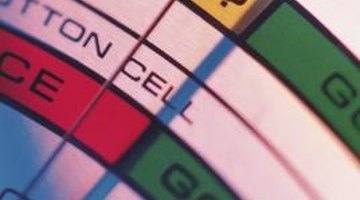How to Calculate Watts in a Parallel Circuit
Circuits carry potentially dangerous amounts of energy, and anyone who works with a circuit must know the specific wattage it carries to work with it safely. Determining the wattage of a parallel circuit is possible but requires the right tools and mathematical formula. These steps will allow you to measure the wattage of a parallel circuit.

-
Turn off the power flowing into the circuit.
-
Disconnect the connectors between the negative terminal of the power supply to the circuit.
-
Connect the ammeter between the circuit and power source, making sure to connect the negative connector of the ammeter to the negative terminal of the power source and the positive connector to the circuit.
-
Turn on the power and measure the amps of the circuit.
-
Turn off the power flowing to the circuit. Never turn on the power while the ohmmeter is connected.
-
Zero your ohmmeter by setting it to its lowest range and touching the leads together. Turn the calibration knob until the needle is at zero. This will compensate for battery deterioration in the ohmmeter.
-
Disconnect both ends of the parallel circuit.
-
Connect the ohmmeter to both ends of the circuit and measure the resistance in ohms.
-
Use this formula-Power = amps squared divided by resistance-to calculate the watts of the circuit.
References
- Bernie Gabin; PhD Candidate at Brandeis University; Waltham, MA
Warnings
- Set your ammeter to the highest setting to avoid damaging the meter.
- Never form a parallel circuit with an ammeter and a power source because an ammeter has low resistance and will cause a short circuit.
Writer Bio
Taylor Shiells started writing professionally in 2010. His expertise is in literature and carpentry techniques. Shiells' work has appeared in various online publications. He graduated from Brandeis University with a Bachelor of Arts in English and American literature.
Photo Credits
- Ablestock.com/AbleStock.com/Getty Images
More Articles



